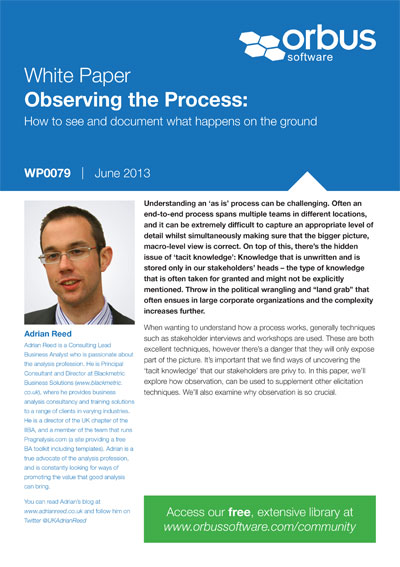In this paper, Adrian Reed explores how observation can be used to supplement other elicitation techniques, including how to find ways of uncovering the ‘tacit knowledge’ that the stakeholders are privy to. He’ll also examine why observation is so crucial to the overall process.
Understanding an ‘as is’ process can be challenging. Often an end-to-end process spans multiple teams in different locations, and it can be extremely difficult to capture an appropriate level of detail whilst simultaneously making sure that the bigger picture, macro-level view is correct. On top of this, there’s the hidden issue of ‘tacit knowledge’: Knowledge that is unwritten and is stored only in our stakeholders’ heads – the type of knowledge that is often taken for granted and might not be explicitly mentioned. Throw in the political wrangling and “land grab” that often ensues in large corporate organizations and the complexity increases further.
When wanting to understand how a process works, generally techniques such as stakeholder interviews and workshops are used. These are both excellent techniques, however there’s a danger that they will only expose part of the picture. It’s important that we find ways of uncovering the ‘tacit knowledge’ that our stakeholders are privy to. In this paper, we’ll explore how observation, can be used to supplement other elicitation techniques. We’ll also examine why observation is so crucial.
Please login to continue reading this white paper about understanding and documenting your busienss processes from Adrian Reed.
